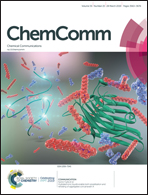An Sn doped 1T–2H MoS2 few-layer structure embedded in N/P co-doped bio-carbon for high performance sodium-ion batteries†
Abstract
A facile method for fabricating Sn doped 1T–2H MoS2 embedded in N/P co-doped bio-carbon is developed using natural chlorella as an adsorbent and a nanoreactor. When used as an anode for sodium-ion batteries, it delivers an excellent rate performance (167 mA h g−1 at 15 A g−1), high capacity (533 mA h g−1 after 50 cycles at 0.1 A g−1), and superior long-term cycling stability (320 mA h g−1 after 500 cycles at 1 A g−1) which are attributed to the synergistic effects of few-layer 1T–2H MoS2 moderate Sn doping and the N/P co-doped bio-carbon.



 Please wait while we load your content...
Please wait while we load your content...